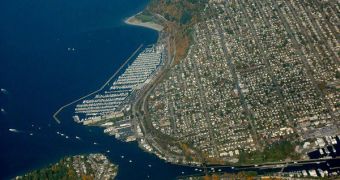A group of experts at the Stanford University announce the release of the first legal “roadmap” to fighting oceanic acidification-inducing pollution at the local level. The document also includes steps that authorities can take in these issues.
In addition to global greenhouse gas emission rates, the process of acidification is also taking place on account of local sources such as coastal pollution. While the will to do anything at a planetary scale is lacking, maybe things will be different at the local level, experts say.
The new document was compiled by marine scientists and legal experts at the Stanford Center for Ocean Solutions. The main conclusion listed within is that even existing laws can be used to reduce the nefarious influence of coastal pollution on the waters.
Ocean acidification is a process that refers to the decrease of pH levels in the world's waters. The effect is caused by the fact that oceans currently need to capture vastly more carbon dioxide than before.
When the chemical enters the water, it gives birth to a compound known as carbonic acid, which goes on to lower pH. The lower pH levels go, the more acidic waters become. Conversely, higher pH levels indicate alkaline waters.
Researchers at the Center published their research in the May 27 issue of the top journal Science. They say that laws to reduce coastal pollution are already available in the US Clean Water Act, as well as in various municipal zoning regulations.
“Coastal communities don't need to wait for a global solution to fix a local problem that is compromising their marine environment,” explains the executive director of the Center for Ocean Solutions, Meg Caldwell.
The expert, who is a coauthor of the Science paper, is also a senior lecturer at the Stanford Law School and at the Stanford Woods Institute for the Environment. She adds that CO2 has been identified as the main culprit driving oceanic acidification.
“As the level of atmospheric carbon dioxide continues to rise, so too does the amount of CO2 in the ocean, which increases the ocean's acidity,” the authors write in the journal entry.
But “freshwater inputs, pollutants and soil erosion can acidify coastal waters at substantially higher rates than atmospheric CO2 alone,” they go on to say. At the same time, past studies have discovered the development of acidic hotspots in the world's oceans.
“Since an acidification hotspot can negatively impact a community, its causes need to be tackled quickly. We identified practical steps communities can take today to counter local sources of acidity,” adds COS science early career fellow and author co-leader Melissa Foley.

 14 DAY TRIAL //
14 DAY TRIAL //